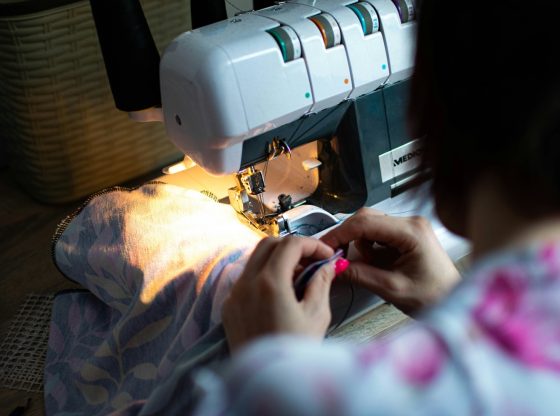The name Etsy conjures up images of cozy studios, handcrafted goods, and passionate creatives pouring their hearts into every stitch, brushstroke, and bead. It’s a haven for unique finds, a place where small-time makers can share their creations with the world – and shoppers can discover products and designs not sold anywhere else.
Or so it should be. For the past several years, doubts have cast a shadow over Etsy. Some sellers’ wares have raised eyebrows, prompting concerns about authenticity and whether their “small-batch” claims hold water.
It’s left some wondering – is Etsy still the handmade haven it used to be, or has it morphed into another money-grubbing marketplace full of mass-produced goods?
And if it’s the latter, what can consumers do about it?
Origins and Evolutions
Let’s rewind. Etsy launched in 2005, a beacon of hope for independent artisans yearning for a place to sell and carve out a space separate from big-box manufacturers. It offered a platform where creativity could bloom, fueled by passion and ingenuity. We fell in love with quirky mugs, one-of-a-kind jewelry, handknit apparel seemingly weaved with stories. Shopping on Etsy felt really good, becoming synonymous with authenticity, quality, and supporting the little guy or gal with a dream.
However, as popularity soared, the marketplace shifted. In 2013, certain mass-produced items became permissible on Etsy. This eventually led to such items overshadowing or even masquerading as handmade.
Frustration brewed among both buyers and genuine Etsy sellers. Consumers felt duped, the worry of encountering unwanted mass-produced items chipping away at the sense of trust once associated with Etsy. Artisans saw their hard work eclipsed by cheap copies churned out in faceless factories, undercutting their prices and passion.
So, what do things look like today? Etsy documentation still states that “everything listed for sale on Etsy must be handmade by [sellers], vintage, or a craft supply.” Yet comments across Etsy’s own forums, and social communities like Reddit, still have users complaining about the proliferation of resellers and dropshippers.
How to Find Truly Handmade Items on Etsy
But not all hope is lost – don’t let the whispers deter you from discovering the genuine gems that still sparkle brightly on Etsy. Here’s how to find handmade goods on Etsy like a pro:
1. Scrutinize Images: And not just on the product listing itself, but across the seller’s other listings, too. Beware of stores where product photos wildly differ in style or quality. This could be a sign of resellers pulling images from various sources.
You should also leverage Google Image Search to see if the same exact product photos pop up on sites like Amazon, Alibaba, Aliexpress, and the like. Seeing identical photos across the internet, from different sources (and not posted by the seller themselves), will sadly indicate non-handmade.
2. Inspect the Listings: Carefully read through product descriptions. Obvious words like “wholesale,” “bulk orders,” or “manufactured” should raise an eyebrow. And if something seems suspiciously cheap for a handcrafted item, it probably is. Look for details about materials, fabrics, timeframes, creation processes, and so on.
3. Dig Deep into Shop Profiles: Dive beyond product photos. Explore their “About” section, and read feedback from other buyers. Look for keywords like “handmade,” “handcrafted,” or “made to order.” Do they share their creative process? Do they showcase their studio or workspace? Do they share how they got into the creative business and what sparked the shop in the first place? This can be a good indicator of authenticity.
4. Embrace Reviews (with Caution): Read reviews, but take them with a grain of salt. Fake reviews do exist, so look for consistency, detail, and photos accompanying reviews. Negative reviews may offer valuable insights, but consider the context and overall sentiment.
5. Follow the Paper Trail: Check shop policies and shipping information. Does it seem realistic for a single person or small team to produce the volume of items listed? Look for domestic shipping if the location aligns with the shop’s story.
6. Seek Out Certifications: Etsy offers “Star Seller” badges to shops with consistently high ratings and performance (learn more here:). While not foolproof, it’s a positive indicator. Also look for independent certifications specific to their craft, such as those offered by Guilds or Artisans Associations.
7. Trust Your Gut: Sometimes, you can just tell there are red flags. If something feels off, walk away. There’s an abundance of genuine, passionate Etsy sellers waiting to fill your cart with joy.
Remember, Etsy is still a great destination to explore. By applying these tips and maintaining a healthy dose of skepticism, you can navigate the platform with confidence and uncover the handcrafted goodness that originally made us fall in love with it.



